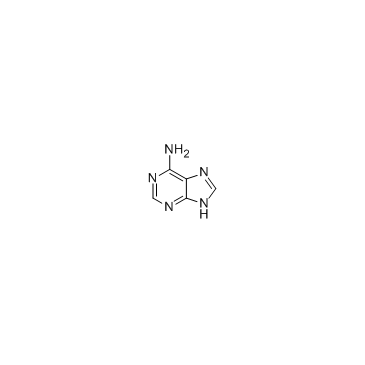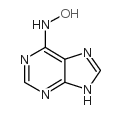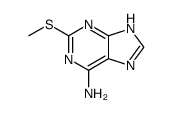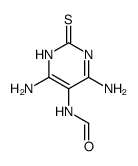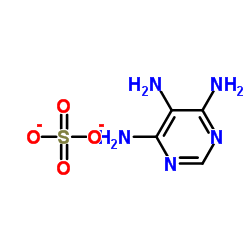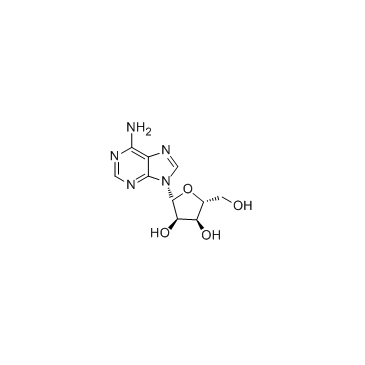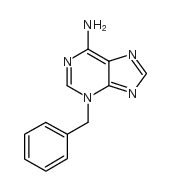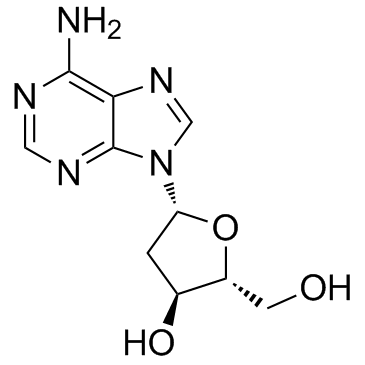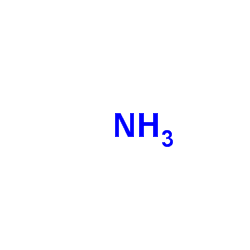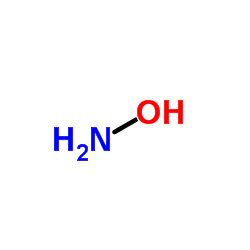73-24-5
| Name | adenine |
|---|---|
| Synonyms |
7(9)H-purin-6-ylamine
Ade 1H-Purine-6-amine Vitamin- B4 Adenin 1,9-Dihydro-6H-purin-6-imine 9H-Purine-6-amine EINECS 200-796-1 adensoine Crytidine 1H-Purin-6-amine 9H-Purin-6-yl-amin 9H-Purin-6-amin 9H-Adenine T56 BM DN FN HNJ IZ Leuco-4 9H-Purin-6-amine MFCD00041790 Adenine ADENINE(P) usafcb-18 6-aminopurine 6-amino-Purine Vitamin B4 |
| Description | Adenine is a purine derivative and a nucleobase with a variety of roles in biochemistry. Target: Nucleoside antimetabolite/analogAdenine is a nucleobase with a variety of roles in biochemistry including cellular respiration, in the form of both the energy-rich adenosine triphosphate (ATP) and the cofactors nicotinamide adenine dinucleotide (NAD) and flavin adenine dinucleotide (FAD), andprotein synthesis, as a chemical component of DNA and RNA. The shape of adenine is complementary to either thymine in DNA or uracil in RNA.In older literature, adenine was sometimes called Vitamin B4. It is no longer considered a true vitamin or part of the Vitamin B complex. However, two B vitamins, niacin and riboflavin, bind with adenine to form the essential cofactors nicotinamide adenine dinucleotide (NAD) and flavin adenine dinucleotide (FAD), respectively. Hermann Emil Fischer was one of the early scientists to study adenine. Experiments performed in 1961 by Joan Oró have shown that a large quantity of adenine can be synthesized from the polymerization of ammonia with fivehydrogen cyanide (HCN) molecules in aqueous solution, whether this has implications for the origin of life on Earth is under debate. |
|---|---|
| Related Catalog | |
| Target |
Human Endogenous Metabolite |
| References |
[1]. Reader V. The assay of vitamin B(4). Biochem J. 1930;24(6):1827-31. |
| Density | 1.9±0.1 g/cm3 |
|---|---|
| Boiling Point | 243.2±50.0 °C at 760 mmHg |
| Melting Point | 360-365ºC |
| Molecular Formula | C5H5N5 |
| Molecular Weight | 135.127 |
| Flash Point | 100.9±30.1 °C |
| Exact Mass | 135.054489 |
| PSA | 80.48000 |
| LogP | -2.12 |
| Vapour Pressure | 0.0±0.5 mmHg at 25°C |
| Index of Refraction | 1.954 |
| Water Solubility | 0.5 g/L (20 ºC) |
CHEMICAL IDENTIFICATION
HEALTH HAZARD DATAACUTE TOXICITY DATA
MUTATION DATA
|
| Symbol |

GHS06 |
|---|---|
| Signal Word | Danger |
| Hazard Statements | H301 |
| Precautionary Statements | P301 + P310 |
| Personal Protective Equipment | dust mask type N95 (US);Eyeshields;Faceshields;Gloves |
| Hazard Codes | Xn:Harmful |
| Risk Phrases | R22 |
| Safety Phrases | S26-S36 |
| RIDADR | UN 2811 6.1/PG 3 |
| WGK Germany | 3 |
| RTECS | AU6125000 |
| Packaging Group | III |
| Hazard Class | 6.1 |
| HS Code | 2936290090 |
| Precursor 10 | |
|---|---|
| DownStream 9 | |
| HS Code | 2933990090 |
|---|---|
| Summary | 2933990090. heterocyclic compounds with nitrogen hetero-atom(s) only. VAT:17.0%. Tax rebate rate:13.0%. . MFN tariff:6.5%. General tariff:20.0% |
